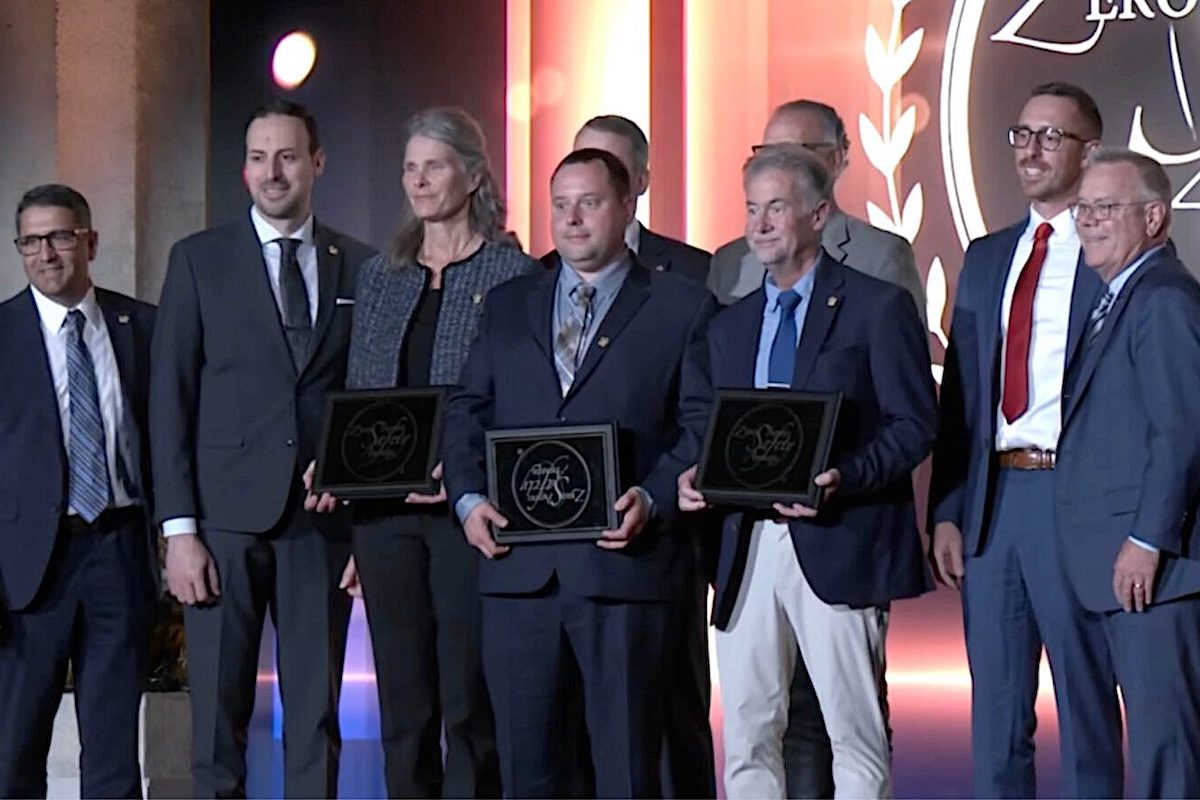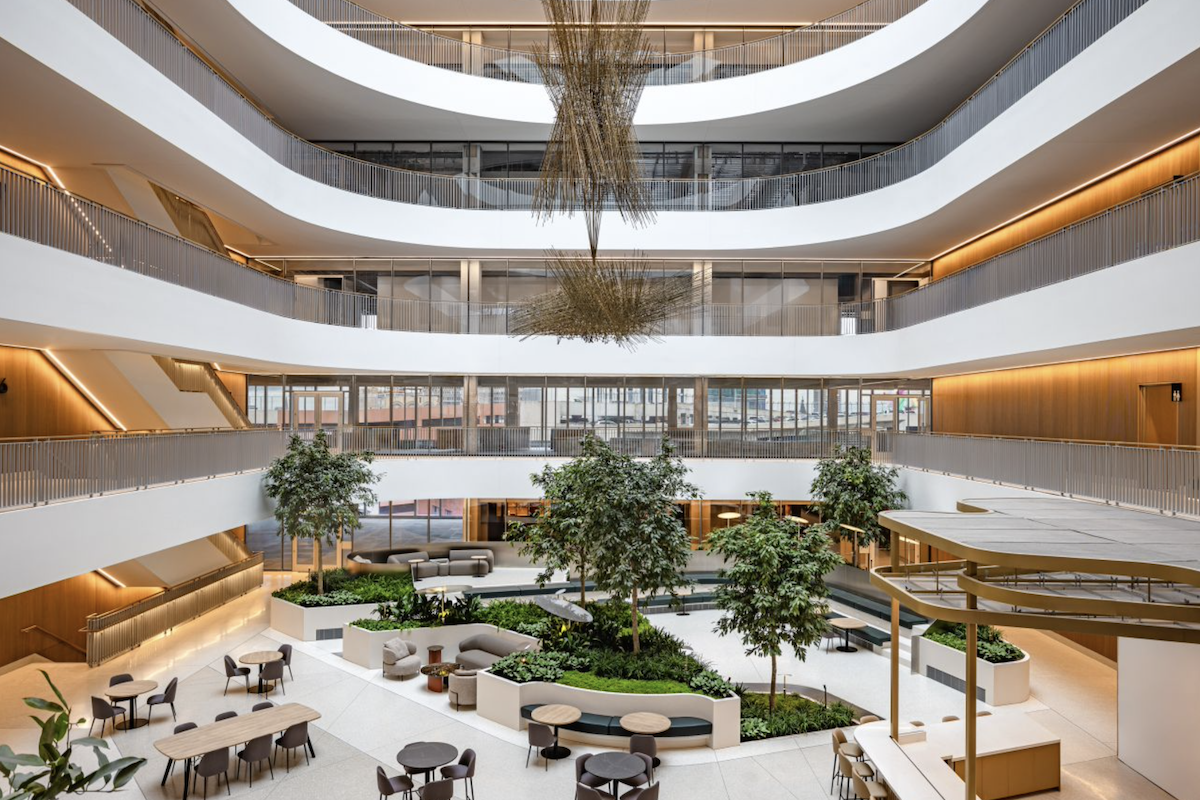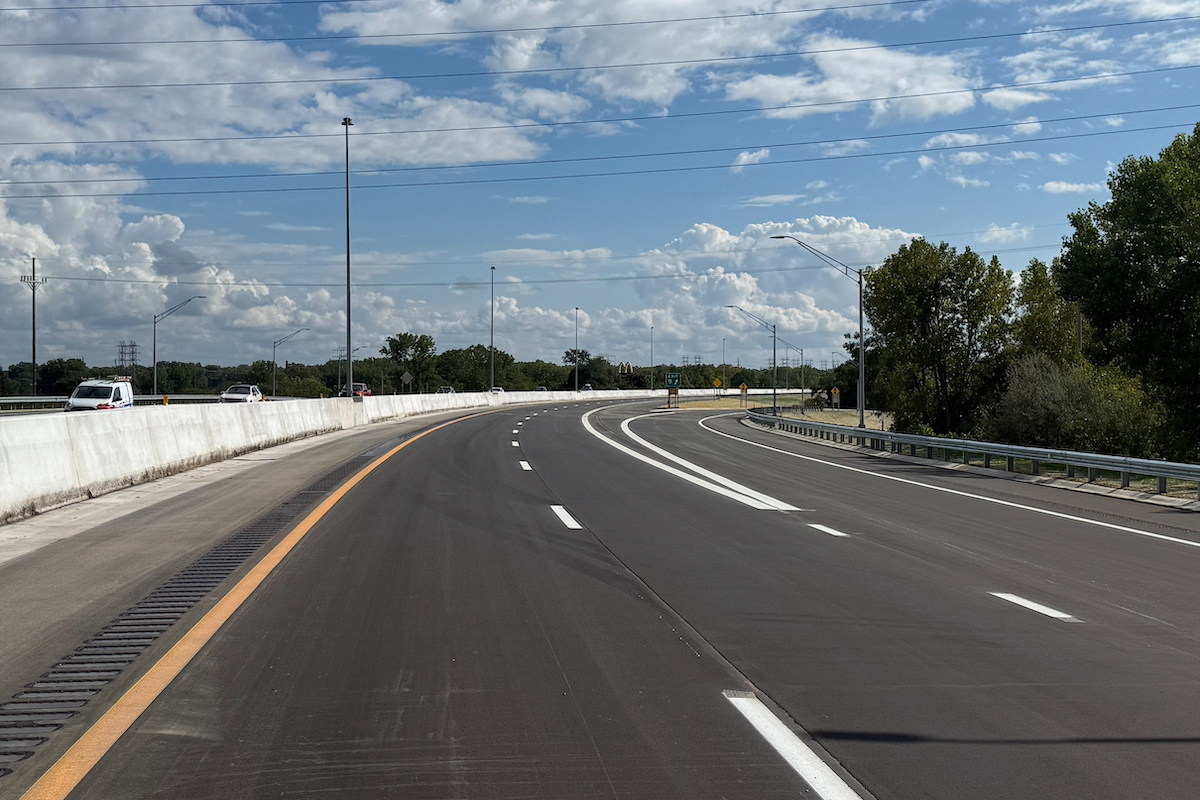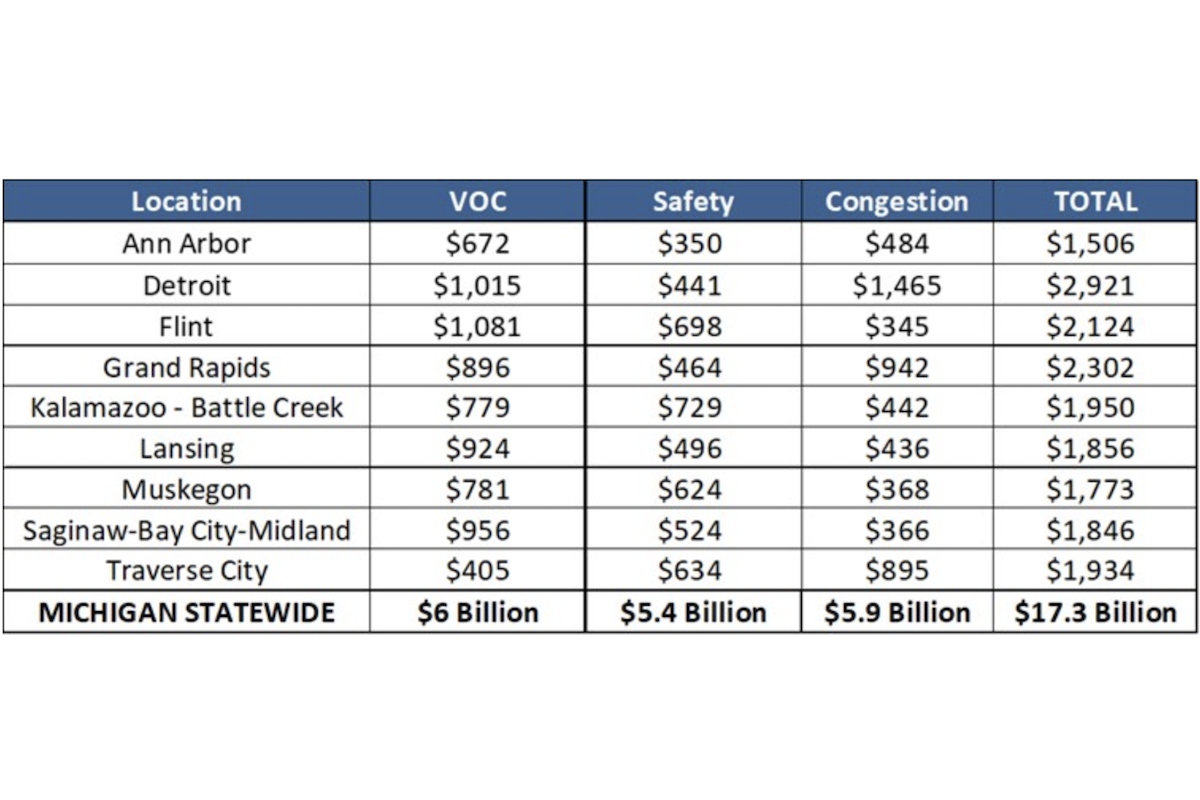On the campus of North Carolina’s High Point University (HPU), D.S. Duggins Welding, Inc., of Winston-Salem, North Carolina, faced the usual challenges of a tight job site and even tighter delivery schedule as they erected 1,150 tons of steel under a $1.3 million contract.
But the project’s real conundrum was solving problems with columns pulling out of tolerance. Although the columns were confirmed to be within AISC tolerance before Duggins Welding turned the section over, the columns later moved outside of allowed tolerance once slab on decks were poured. No root cause was found.
“While I will never feel like it was anything we did to cause the issue, we stuck to our core values and did what we had to do to make the building right, all while maintaining our relationships with our customers,” said Zach Burick, President/Owner of Duggins Welding.
Between labor, equipment rentals, and purchases, the company spent six figures on the extra work. HPU’s Panther Commons ultimately finished on time, and Duggins Welding earned a 2024 Project of the Year award for their efforts from the Steel Erectors Association of America (SEAA) in Structural Class III for projects $1 million to $2.5 million.
Built in the heart of campus, “This job site was tight from the word go, so as we went vertical, it only became tighter — not to mention the limited space once other trades mobilized,” Burick said.

| Your local Deere & Co dealer |
|---|
| AIS Construction Equipment |
Throughout steel erection, crews used a 150-ton Link-Belt LS-238 Crawler Crane rented from W.O. Grubb in Greensboro, North Carolina.
“That was the biggest piece of equipment we had onsite, but we also used three or four boom lifts and at least one telehandler,” Burick said. “When space got tighter at the end of the job, we had to move our office trailer and minimize all the equipment we could.”
Space wasn’t the only constraint. Because of the project’s tight schedule, “We exhausted all our resources as far as equipment and the crews we had available in-house, so we subcontracted parts of the project such as decking and studs to finish in a safe, timely manner,” Burick said.
At the beginning of the job, they had 10 to 12 team members onsite; at the peak of work, that number doubled.

| Your local Trimble Construction Division dealer |
|---|
| SITECH Michigan |
With all the restrictions, they developed a precise sequencing plan and delivery schedule for the steel. They divided the project into three different areas labeled A, B, and C.
However, “We ended up having to cut area A into halves in order to make it work with the reach on the crane,” Burick said. “There was about 20 feet we couldn’t get to if we continued to go vertical all the way across area A. SteelFab, the fabricator, was very accommodating and helped us with that. We went ground to roof in each area — A1, then A2, B, and C — so we didn’t move the crane more than we absolutely needed to.”
Once Duggins Welding finished the steel work, they made sure everything was within tolerances.
But then, “They started to pour the concrete and some columns started to come in; some of them went out,” Burick said. “We couldn’t adjust the columns at that point because the concrete locked everything in place.”

| Your local Deere & Co dealer |
|---|
| AIS Construction Equipment |
Duggins Welding met with the design team, general contractor, and fabricator multiple times over a two-week period and no cause could be found. To solve the problem, the engineering team provided their input, the fabricator sent more material, and Burick’s crews mobilized again.
“All the additional work was on the perimeter steel,” he explained. “The bent plate that catches the concrete pour on the back side of that was a relief angle for the brick to lay on. Because the columns moved, it was either too far in or too far out. If it was too far in, we had to add bottom plate to extend it to where it needed to be for the masons. If it was too far out, we had to pop a stringline and cut it so it was where it needed to be on the face.”
To accomplish that, they needed to buy a plasma cutter and rent a 110-foot boom lift.
“We had figured in the bid process that we’d need some 80-foot lifts, but at the end of the job, the site was limited,” Burick said. “We could only access a certain length on one side of the building, so we had to get a bigger piece of equipment for the additional work. None of that was accounted for in our original bid.”

| Your local Deere & Co dealer |
|---|
| AIS Construction Equipment |
Finishing the extra work took over four weeks. “Obviously it hurt our margins, but we maintained a good relationship,” Burick said. “We showed good faith and put in all the effort to make it right. We were onsite longer than anticipated, but the additional work didn’t affect the critical path for project completion.”
Duggins Welding started steel erection in May 2022, topped out in November 2022, and the entire project finished at the end of summer 2023. The new 200,000-square-foot, five-story Panther Commons now serves as residence hall, retail, dining, and study space for students.
Since that project, Duggins Welding implemented new forms they now use on every project. When they finish their work, they walk the job with the general contractor, who then signs the form to acknowledge that everything is within tolerance.
Going forward, those forms will help prevent the company from being on the hook for something they didn’t cause. But no matter what, “Building and nurturing relationships is very important to me,” Burick said.

| Your local Deere & Co dealer |
|---|
| AIS Construction Equipment |
Before acquiring Duggins Welding in 2021, Burick spent nearly a decade working for the company founded by Derek Duggins in 1986. He started as a general laborer while still in school at the University of North Carolina Charlotte and worked his way up to Estimating Project Manager and now Owner.
Projects that were topped out in 2022 or 2023 and completed without significant accident or injury were eligible for the 2024 SEAA awards.
“SEAA has been recognizing steel erectors for their work for more than 20 years,” Gum said. “Winners are selected by an independent panel of engineers based on how they safely and productively overcame the challenges of the job. The challenges are often common ones all erectors face — space and time constraints, changing schedules, complex rigging and lifting, weather delays. The award winners demonstrate how creative construction processes, pre-planning, and communication make the difference for completing a job without injury and on time.”



































































